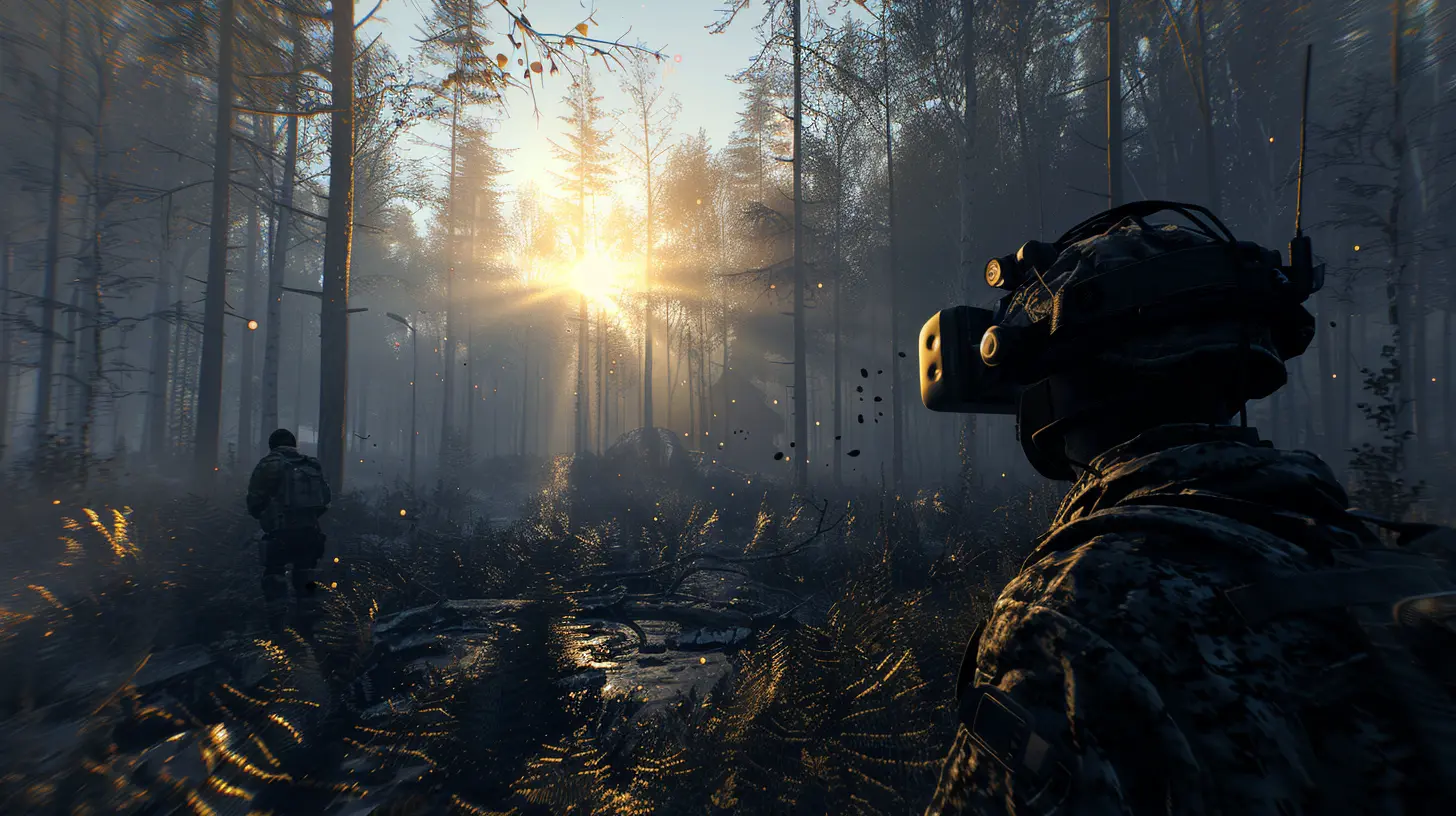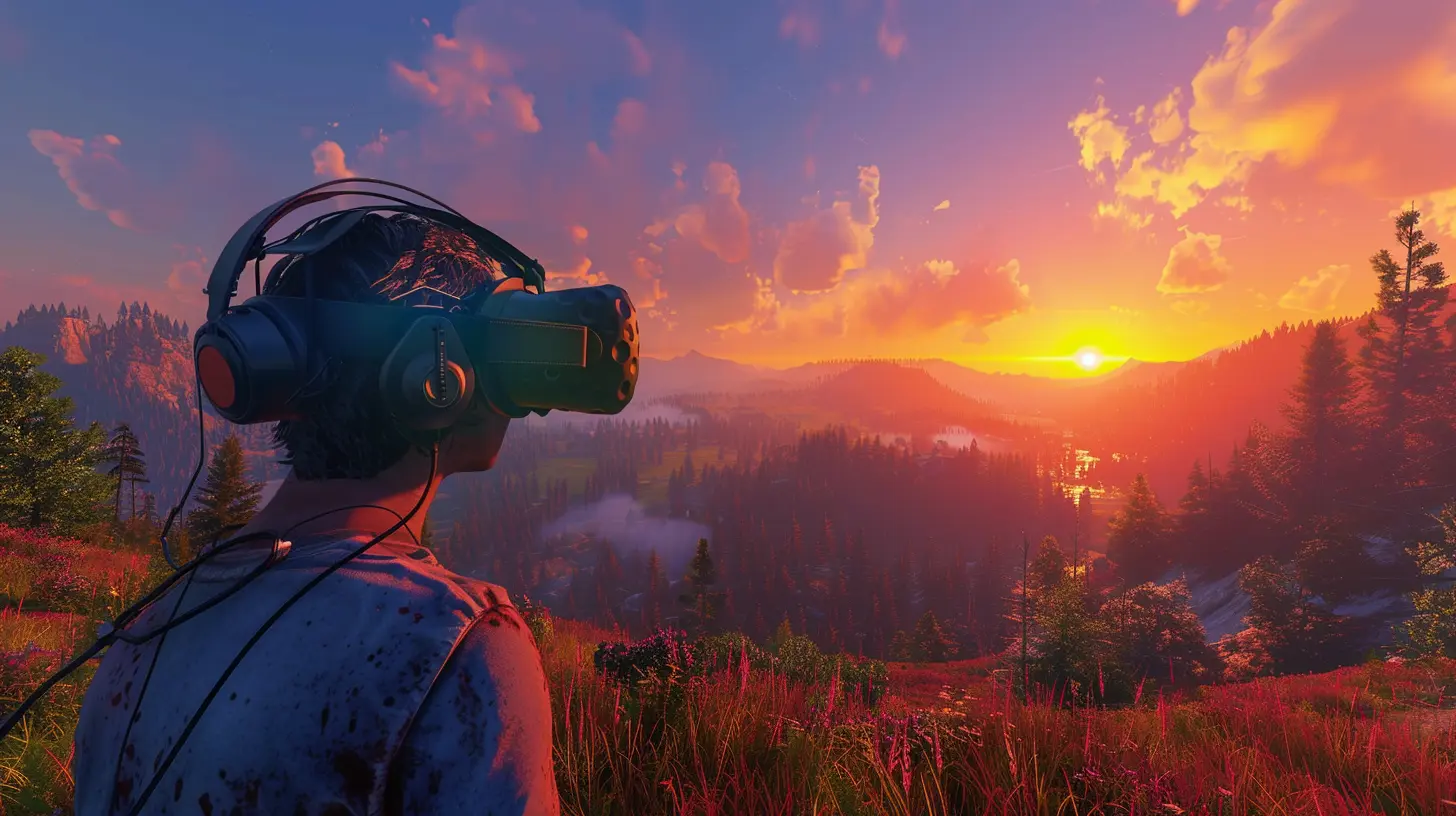Surviving in VR: Virtual Reality and the Future of Survival Games
18 November 2025
Virtual reality (VR) is no longer just a fancy playground for tech geeks and sci-fi enthusiasts—it's shaping up to be the next big thing in gaming. And you know what’s even more exciting? Survival games are getting a virtual overhaul too. Imagine battling for your life in a post-apocalyptic wasteland, scavenging for resources, or running from zombies, all while feeling like you're actually there. That’s the kind of immersive experience VR brings to the table.
In this article, we’ll take a closer look at how VR is changing the survival gaming genre, the challenges developers face, and what the future might look like for this heart-pounding niche. Whether you're a seasoned gamer or new to VR, there’s a lot to unpack. So, strap on your virtual headset—let's dive in. 
What Makes Survival Games Tick?
Before we delve into the VR side of things, let’s take a step back and talk about what makes survival games so addictive. Why do we love putting ourselves in life-or-death situations (virtually, of course)?Here’s the deal: survival games tap into our primal instincts. They’re about resource management, dodging danger, and adapting to unpredictable environments. Whether you’re crafting tools in "Minecraft" or battling the harsh tundras of "The Long Dark," there’s an undeniable thrill in overcoming challenges that feel authentic.
And authenticity is exactly where VR shines. It cranks up the immersion factor to eleven, which is a game-changer (pun intended). 
The Immersion Factor: Why VR + Survival Is a Perfect Marriage
Survival games and VR are like peanut butter and jelly—they’re just meant to be together. Why? Because survival games thrive on tension, and nothing builds tension like feeling you're in the game.Picture this: you’re exploring a dark cave, flashlight in hand. In a regular game, it’s creepy enough on a flat screen. But in VR? Oh, man. You feel the darkness pressing in around you. Your palms sweat as you hear something skittering nearby, and every nerve in your body screams at you to get out.
That’s the power of VR. It takes survival games, which are already designed to keep you on edge, and dials up the intensity through sensory immersion. 
Key Features That Make VR Survival Games Unique
So, what exactly does VR bring to the survival gaming table? Plenty. Let’s break it down:1. Hands-On Interaction
In VR, you’re not just pressing buttons to open doors or swing weapons—you’re physically doing it. So when you’re crafting, chopping wood, or scavenging for food, it feels like real work. (Yep, survival games might actually make you sweat in VR!)2. Heightened Environmental Awareness
In traditional games, the screen limits your field of view. In VR, you can turn your head, peek around corners, and look up or down naturally. This makes exploring vast terrains or sneaking past enemies way more intense—and satisfying.3. Enhanced Combat
Sword fights, gun battles, or even throwing rocks at predators? They’re way more engaging in VR. Instead of spamming the attack button, you’re relying on your reflexes and aim. It’s basically survival boot camp.4. Fear Amplification
We’ve touched on this already, but it’s worth emphasizing: horror fans, VR survival games are going to mess with your nerves. From hearing footsteps behind you to feeling like something’s breathing down your neck, VR creates fear like no other medium.
Challenges in Creating VR Survival Games
Of course, it’s not all smooth sailing. Developing VR survival games comes with its fair share of hurdles. Let’s face it—no revolution is without a few bumps.Motion Sickness
Ah, the dreaded VR nausea. If the movement mechanics in a game aren’t spot-on, players can end up feeling queasy. Balancing smooth locomotion with comfort is a massive challenge for developers.Hardware Limitations
Not everyone can afford high-end VR setups. Developers have to strike a balance between creating jaw-dropping graphics and ensuring the game runs smoothly on a variety of systems.Physical Fatigue
Let’s be real—punching, running, and interacting in a virtual world can be exhausting, especially during long gaming sessions. Developers need to design mechanics that are engaging but not overwhelming for players.Complexity of Programming
Designing a VR survival game is no easy feat. Developers must account for physics, realistic interactions, motion tracking, and more. It’s like trying to juggle swords while walking across a tightrope.The Best VR Survival Games Right Now
If you’re itching to see what all the fuss is about, here are a few VR survival games that are already making waves:1. The Forest VR
Stranded on an island, hunted by cannibals, and scrambling to survive? Sign me up (or maybe not). "The Forest VR" throws you into a harsh wilderness where every decision could be your last.2. Subnautica VR (Mod)
Dive deep into alien oceans in this fan-favorite survival game. Though not officially VR-compatible, mods let you experience the game’s stunning underwater environments like never before.3. Green Hell VR
Set in the Amazon rainforest, this game is all about survival against the odds. Hunger, thirst, predators—you name it, it’s trying to kill you. The VR version amps up the realism, making every snake bite and fever feel way too real.What Does the Future Hold for VR Survival Games?
Now let’s talk about where this genre is headed. Spoiler alert: it’s looking pretty bright.Hyper-Realism
As VR technology advances, we’re going to see mind-blowingly realistic survival games. Imagine feeling the texture of tree bark or the sting of raindrops.Expanded Multiplayer Features
Imagine forming alliances or betraying friends in a VR survival game. Multiplayer mechanics are already fun on flat screens, but they’ll be even better when you’re face-to-face with other players in VR.Integration with AI
AI-driven NPCs (non-playable characters) might add a whole new layer of unpredictability to survival games. Think of enemies and allies that adapt to your playstyle in real-time.Wearable Technology
Ever thought about physical feedback? Devices like haptic suits and VR treadmills could make survival games even more immersive by simulating sensations like getting hit or walking on uneven terrain.Bigger Worlds
One of the limitations of VR right now is hardware constraints. But as tech improves, we’ll see open-world VR survival games so huge and detailed that you’ll feel like you’ve entered another dimension.Is VR Survival Gaming for You?
So, is VR survival gaming worth diving into? If you’re someone who loves being completely absorbed in a game, then absolutely. Sure, VR has its quirks, and it might take a bit of getting used to. But the payoff? An experience that feels like living another life—not just playing a game.That said, VR survival gaming isn’t for everyone. It’s intense, physically demanding, and sometimes downright terrifying. But for those who thrive on adrenaline and love a good challenge, VR survival games are the ultimate frontier.
Final Thoughts: A New Era of Gaming
Virtual reality isn’t just a cool gimmick—it’s a paradigm shift in how we experience games. And for survival games, VR unlocks a level of immersion and intensity that’s simply unmatched. It’s not just about watching your character struggle to survive; it’s about feeling those struggles yourself. From scavenging to combat to facing your fears head-on, VR survival games redefine what it means to play.So if you’re ready to brave the elements, fight off enemies, and embrace the chaos, grab a VR headset and dive in. Just don’t forget to take a break and hydrate—your real body will thank you.
all images in this post were generated using AI tools
Category:
Survival GamesAuthor:

Tina Fisher
Discussion
rate this article
1 comments
Kristen Clarke
Virtual reality transforms survival games, immersing players in intense challenges that test resilience and creativity. As technology evolves, so too will our experiences, blurring the lines between survival and virtual existence.
November 18, 2025 at 5:53 AM


